How to Handle Reduced Visibility in Google Ads’ Search Term Reports
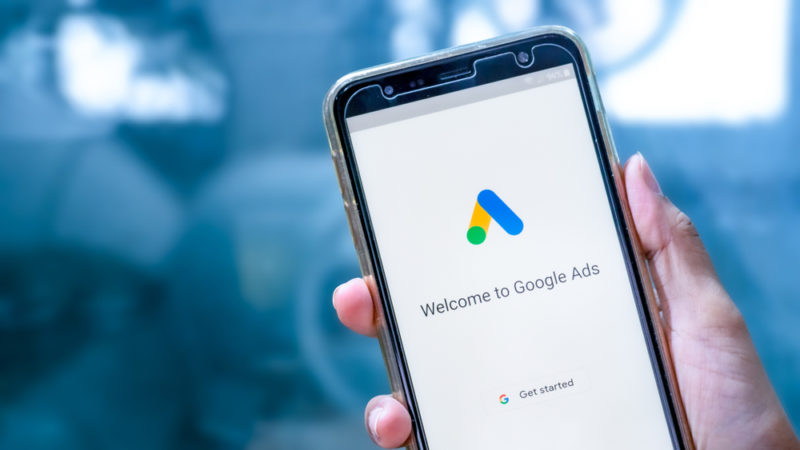
In this blog we will look more closely at the impact of Google’s change to the keyword level data available to advertisers. The change was announced through a notification to advertisers within Google Ads on September 2nd 2020.
This update affects the Search Term Reports in Google Ads. These reports detail the specific queries that triggered adverts and are widely used by PPC professionals.
Despite the seemingly low-key announcement, this change is important for advertisers and is another step from Google that limits advertisers’ visibility and control (e.g. expanding the criteria for exact keywords matching, the rise of close variants etc.).
We will dive into how the Google Asa keyword update is likely to affect PPC professionals’ visibility of spend and how to handle the impact of this for campaign management and optimisation.
What has changed?
Citing security reasons, Google will now only show search queries with a ‘significant’ number of searches (impressions) in the Google Ads search terms report, so search queries with few impressions won’t be visible even if they received a click, thus incurring a cost.
Unfortunately, further clarification as to what constitutes ‘significant’ number of searches wasn’t provided.
In practice, this change means the search reports (which show the exact search queries that matched to an advertiser’s keywords historically) will no longer show all of the clicks and costs corresponding to the search terms that triggered an advertiser’s ads.
In fact, low impression searches which didn’t result in a click were already not showing in search term reports.
What impact will this have?
The affected queries will mainly be rarely searched phrases, which on a case-by-case basis may seem insignificant. However, at an aggregate level they will collectively account for a considerable percentage of ad spend.
Early estimates by Seer predicted this change would result in 28% of ad spend unaccounted for by search terms and 20% of clicks, on average.
However, our month on month (August vs. September 2020) analysis of the search campaigns we manage has found the following:
- Click volume from hidden search terms in September was 43.2% vs 2.53% in August
- Cost from hidden search terms was 44.7% vs. 6.8%
- Impressions from hidden search terms were more stable at 68.8% compared to 64.8%
This shows a significant impact on unaccounted for search terms traffic and cost, while the lost visibility of impressions is less severe.
We visualised the gap between actual total volumes and those we have search term visibility of on Google Ads:
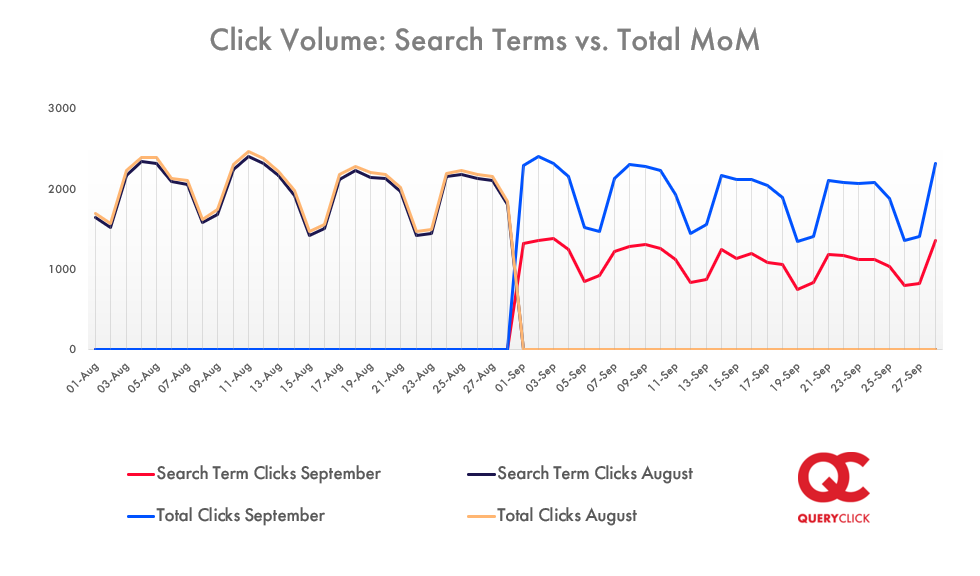
As seen here in September the gap between overall clicks and clicks from visible search terms increases significantly.
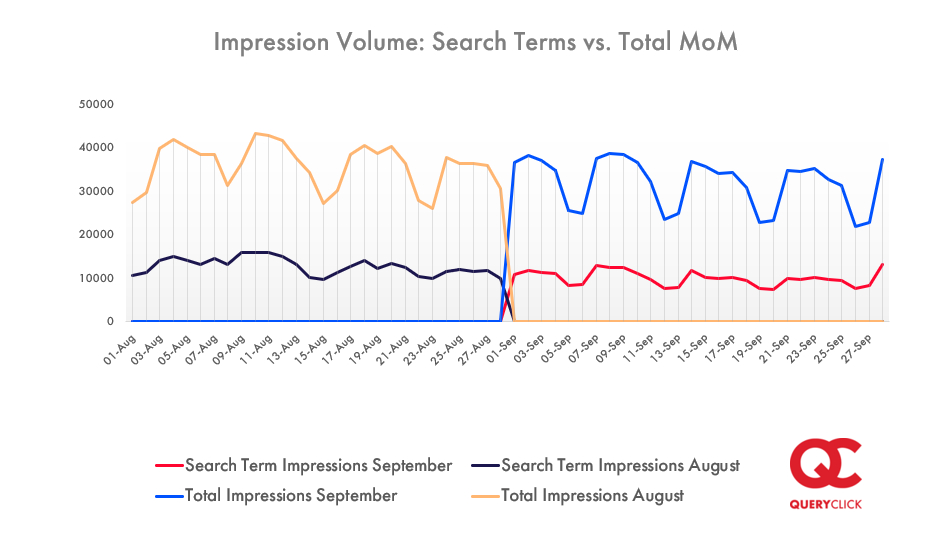
In terms of impression volume, the gap here remains more consistent.
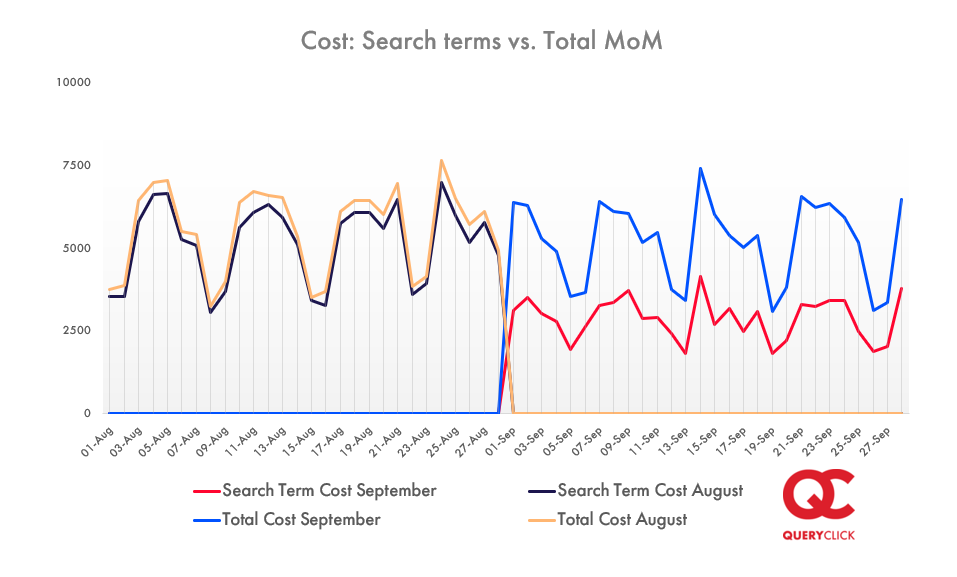
Most importantly, the difference between overall media spend and media spend for visible search terms widens, resulting in 44.7% of spend in September being on hidden terms.
How does impact vary across advertisers?
Beyond the example above, it is worth noting that the impact of the change for advertisers will vary greatly based on a number of factors such as:
- Keyword match mix
- Bidding aggressiveness and budget size
- Level of automation
- Industry competitiveness
For example, accounts that cover a large number of broad match keywords containing short, generic terms (e.g. travel insurance) will be open to a large number of potential searches to match to, thus increasing the likelihood of a higher proportion of spend on hidden search terms.
The same applies if the advertiser is bidding aggressively as higher bids open up keywords to match to more potential searches with a declining marginal relevance.
In industries where CPCs are very high (e.g. insurance, legal, tech etc.) the inability to see individual searches that spent significantly above average CPC across campaigns will add up to notable amounts.
To summarise, the changes will have two main effects:
- Reducing visibility – decreasing visibility means advertisers will be limited in their ability to identify new trends; data on new themes starting to match to their keywords is no longer available until such trends are more widely adopted by searchers. Such trends would become more visible only once the search volumes become more significant and the new search terms start showing up in the search term reports. In addition, there is a natural level of spend on rare low-impression searches within each account which will now be less accountable.
- Reducing control – it is common for clicks from rare searches to incur costs above the average level for the campaign. This is due to the algorithm lacking enough historic data to determine elements of the quality score which results in higher bids being required from the advertisers in the auction and thus the resulting click being more expensive. By no longer seeing these searches due to their low volume, advertisers will have less control over matching by not being able to exclude them or add elements of them as negative keywords. So, it would be important to monitor the keyword-level CPCs and where they exceed the average – look for ways to break them down further into new variants. This way, over time there will be more granular data to base bidding decisions on thus increasing control.
How to gauge the impact in your accounts?
A quick and simple way to gauge the impact of this change on your accounts in Google Ads is to go to the “Search Terms” view for all campaigns and select a September date range and compare against the corresponding period in August.
If you then compare the Search term totals to the Account totals, the percentage difference represents the hidden search terms.
However, this method can only be used in accounts where there are no Google Display Campaigns running, otherwise those will be included in the Account total and will massively skew the data.
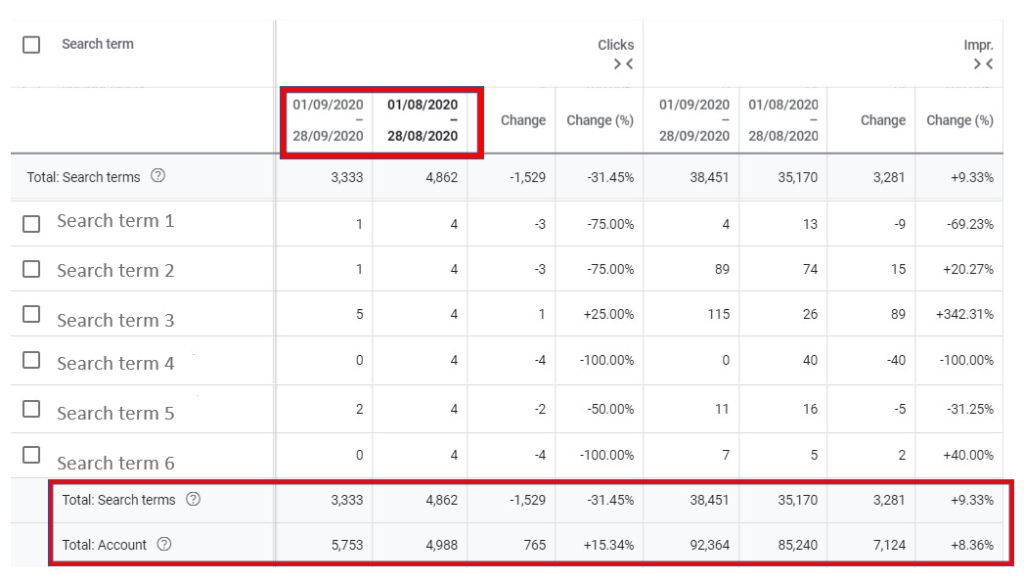
How can you limit the impact of reduced keyword visibility in Google Ads?
Thankfully, there are many things advertisers can do to limit the impact of the change and ensure they have visibility of matching and keyword performance, as well as retaining control over bidding and spending budgets.
Find missing search terms in Google Analytics
If you have your Google Ads and Analytics accounts linked, you will be able to access the “Search Queries” section on Analytics.
There you can discover a big volume of the hidden search terms.
Let’s check how it works using the same account we used in the Google ads example above.
Navigate to the “Acquisition” section of Analytics and then “Google Ads” -> “Search Queries” as below:
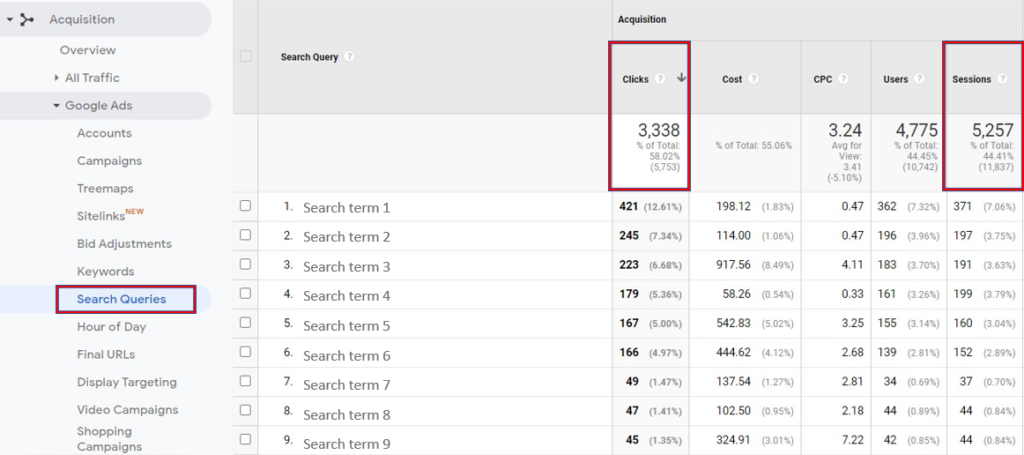
The “Clicks” figure (marked in red) is very close to the one reported in the Search Terms report in Google Ads for the same account (3,338 vs. 3,333 in Google ads). However, as you can see the “Sessions” figure is much higher at 5,257.
So, if you then put “Clicks” column in ascending order you will pull search queries with 0 clicks but also have sessions to the top of the page as below:
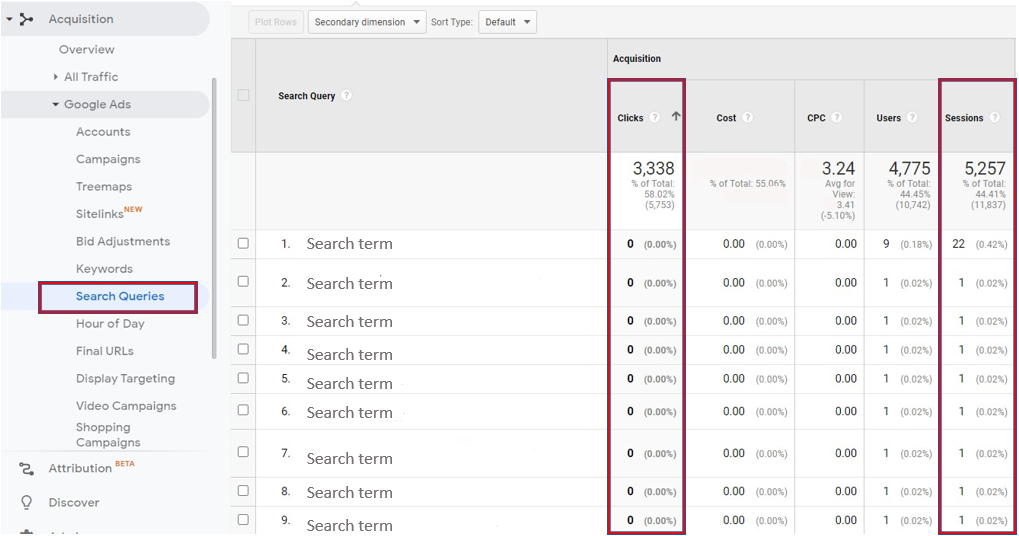
Despite 0 clicks being shown, these searches did result in clicks and therefore sessions.
They can also result in conversions, which is what we are seeing in the example data set.
This means you can set up an Analytics report to export this data and review in the same way you would with Search Terms reports, to identify negatives and relevant phrases to add as new keywords.
Have a robust, granular campaign structure
Make sure your campaigns are split by match type and by theme e.g.:
- Separate generic themes (i.e. by product group or characteristic “mens/womens”)
- Location-based campaigns
- Competitor campaigns
- Brand campaigns etc.
This enables you to effectively test their performance against each other and compare their results to increase your visibility. With this setup, you can then maximise your control over spend as you are able to adjust budgets based on the performance of each campaign.
By grouping keyword match types together, you can ensure sufficient budget allocation for exact match keywords which are the most predictable in terms of matching and therefore intent.
Simultaneously, you will have broad match keywords grouped together so you can control their volume and restrict their cost at campaign level by adding:
- device,
- location
- and time bid modifiers.
Continue regular search term reviews and analysis
Set up regular Google Ads/Analytics exports to review the search terms matching to your campaigns and look for any irrelevant words/phrases that can be added as negatives.
Alternatively, review any searches that are variants of your keywords, are performing well, and have sufficient search volume. These can be added to new ad groups so that they can have their own bids thus increasing control over spend.
Additionally, you can perform n-gram analysis which helps you find the performance of words used in a query by splitting the query into n-grams or strings of words containing a different number of words (1-gram, 2-gram etc.).
For example, a 1-gram analysis will let you compare the performance of queries containing the word “free” and ones containing the word “buy” in terms of all relevant metrics (clicks, impressions, cost, conversions, conversion rate, CPA etc.) Keyword Grouper Pro is a handy tool for running n-gram analysis.
Negative keyword lists at different levels
Use different negative lists for different purposes:
Account level
Setting universal negatives that are irrelevant for the business as a whole will allow you to stop paying for clicks for non-transactional searches, like those for careers, telephone numbers etc.
Campaign level
- Cross-match negatives – make sure you have all of your exact match keywords added as negatives to the equivalent broad match campaigns within an account structure split by match type. This stops any searches matching to broad keywords instead of exact and ensures the higher bids in the exact match campaigns compete for these searches, which tend to have a clearer intent and thus higher conversion rate. Also, within the exact match campaign you can ensure the ad copy is highly tailored to the exact match keywords to maximise relevance and quality score – if they are left matching to the broad campaigns they will be served the same ad as multiple other variations.
- Campaign-specific negatives – separate any negative keywords which refer to the specific theme within the campaign into their own list which can be added to over time. This way you ensure searches containing these words can still match to other campaigns if relevant there.
Layer audience bidding
Layering audience bidding is good if you are running any broad, generic keywords that have the potential to match to a big number and variety of searches that you may not get full visibility of on Google.
You can add different audiences (demographic, detailed demographics, in-market, remarketing) for observation in your campaigns.
Over time you can analyse the audience performance to inform bid adjustments (e.g. +/- 20% on bids for a specific audience segment) to refine your bidding strategy.
By bidding up or down on specific audiences you can alter your competitiveness for searches coming from users within certain audience segments, thus increasing or decreasing the proportion of your click volume coming from users in each segment.
This would improve the relevance of the traffic you drive and ultimately the conversion rate.
Also, you can use audiences to adjust bids for characteristics you know your typical customer has, or doesn’t have (e.g. bid higher for the age group of your typical customer).
Get a free paid search account audit
You can also get a free audit to review your campaign setup, keyword/negative keyword coverage, and audience strategy to identify areas for improvement in terms of visibility and control.
Book your free audit from QueryClick’s PPC experts.
Own your marketing data & simplify your tech stack.
Have you read?
Chrome’s announcement on dropping cookie opt-in last month closed the door on a 5 year saga for marketers. But what is the landscape like in 2025 for cookie-based measurement?
Generative AI is transforming the way that marketers plan and assemble content for their Paid Ads. As big platforms like Google, Meta and TikTok increasingly build the tools needed to...
In a surprising move that has sparked heated debate, Mark Zuckerberg announced on his Instagram that Meta will be reducing its levels of censorship and in particular fact-checking on its...



